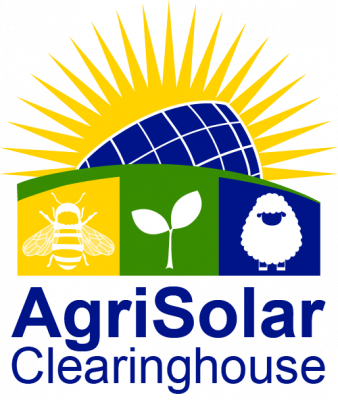This report explores the synergies between farming and solar photovoltaics with the premises that agricultural production on farmland should be maintained and farm profitability and soil health should be improved. Instead of focusing on solar siting, this report explores whether a strong case can be made from a public policy point of view for developing solar so that it helps to preserve and improve farmland and the ecosystem in which it is located, while enabling achievement of both energy system and food system goals. Three examples, using Maryland data, analyzed in the report illustrate the potential of this dual farming-plus-solar approach, with solar being on 10% or less of the farm operation: (i) solar on 100 acres leased from a 1,000 acre corn-soy commodity crop operation; (ii) solar owned by the farmer on 16 acres of a 300-acre dairy-grazing operation; (iii) solar on one-acre of a ten-acre horticultural farm. In each case profits increase substantially. Farm economic resilience is improved because solar revenues are independent of the vagaries of weather and crop markets. While the examples are Maryland-specific, the approach for analyzing dual-use solar is broadly applicable elsewhere in the United States.
Tag Archive for: Solar Grazing
This agreement template example, from the American Solar Grazing Association, Inc., is an example of a limited vegetation maintenance agreement between a solar site manager and a sheep farmer. The example includes terms of the agreement between parties and details regarding obligations under various circumstances for the duration of the contract.
This agreement template example, from the American Solar Grazing Association, Inc., is an example of a comprehensive vegetation maintenance agreement between a solar site manager and a sheep farmer. The example includes instructions for using a contract template, terms of the agreement between parties and details regarding obligations under various circumstances for the duration of the contract.
This is a two-page checklist covering the important issues for both shepherds and solar site managers to consider when managing vegetation under solar panels by grazing sheep. The checklist for solar-site operators includes grazing vs. mowing expectations, insurance updates, and arrangement considerations for the shepherd. The checklist for the shepherd includes determination of fencing plans, maintenance vehicle considerations, signage for property containing grazing animals, and vegetation management plans, among others.
Photovoltaic panels can provide artificial shades to protect livestock against intense solar radiation while serving as a clean energy source. This study determined livestock shade preference between photovoltaic panels and the classical 80% blockage cloth material, and quantified the reduction in radiant heat load provided by these shade structures. The results show that the cattle spent more than 70% of their time in the shade during conditions of the study. These results can be useful in determining best practices on agrisolar operations that include livestock.
This American Solar Grazing Association Sheep Grazing Agreement Template includes a variety of essentail considerations and topics when developing a contractual agreement between sheep farmers and solar-site managers, including the limited vegetation management approach. Some components of this contract template are adjustable depending on the context of the agreement, such as fee and payment schedules, and those options are highlighted in red in the document. Other components of the template include sheep health, welfare and management details, contract prices, use of herbicides and pesticides, fencing, signage and various maintenance concerns.
This American Solar Grazing Association Sheep Grazing Agreement Template includes a variety of essential considerations and topics when developing a contractual agreement between sheep farmers and solar-site managers, including the comprehensive vegetation management approach. Some components of this contract template are adjustable depending on the context of the agreement, such as fee and payment schedules, and those options are highlighted in red in the document. Other components of the template include sheep health, welfare and management details, contract prices, use of herbicides and pesticides, fencing, signage and various maintenance concerns.
This manual provides all the resources you need to write your own grazing plan, monitor its efficacy, and adjust your management throughout the grazing season. The manual will also assist in reviewing plans and records, assessing goal achievements and deficiencies, and suggestions on improving for the next season. Also included in this workbook is a step-by-step process for writing an effective grazing plan. The guide provides resources to assist producers with planning, charting and recording grazing throughout the season.
The objective of this study was to determine the effects on grazing cattle under shade from a solar photovoltaic system. Included in the study were weather data as well as biological and behavioral measurements of the cattle. These measurements included fly avoidance and behaviors, fly counts, respiration rates, drinking activity and bouts, eating behavior, rumination and lying time. The study also collected data on use of shade by the cattle and their body temperature(s). The results of this study show that agrivoltaics may provide an acceptable method of heat abatement to pastured dairy cows, among other benefits.
The objectives of the thesis were to investigate electrical energy use on dairy farms located in west central Minnesota and to evaluate the effects of shade use by cattle from solar photovoltaic systems. This study concluded that agrivoltaics is one method that producers could use to achieve multiple benefits, including but not limited to: increasing land-use efficiency, reducing grid-tied and fossil fuel-produced electricity use, and increasing consumer acceptance all while providing heat abatement to cattle which has the potential to increase milk production, health, and welfare of dairy cows.
